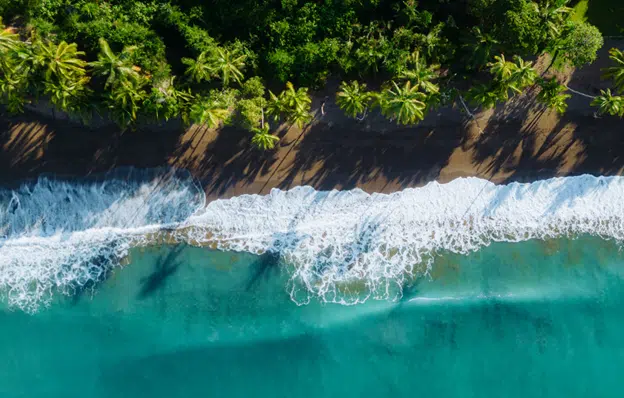For unrivalled, up-close insight into the most biodiverse tropical paradises on Earth, PONANT EXPLORATIONS’ luxury small ships deliver you to untouched shores. And in Costa Rica and Panama, our unique access and exceptional naturalist guides transform every journey into an inspiring eco-adventure. From unspoiled, crystalline coastlines to unique rainforest ecosystems, we share below some of the most breathtaking and biodiverse destinations – on shore and at sea – featured on our Central America expeditions.
Costa Rica: A Symphony of Biodiversity
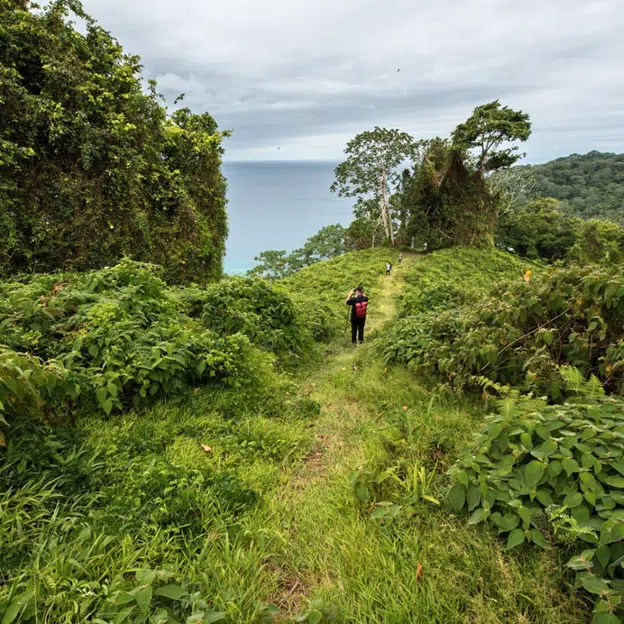
Golfito
In Golfito (“Little Gulf”), you’ll discover one of Central America’s largest tropical forests. This Pacific coast region just north of the Panamanian border is vital to biodiversity, preserving ancient ecosystems that have been largely untouched by human activity. The dense forest canopy harbors rare orchids, reptiles, and over 300 species of birds, providing a critical coastal lowland habitat for flora and fauna found nowhere else.
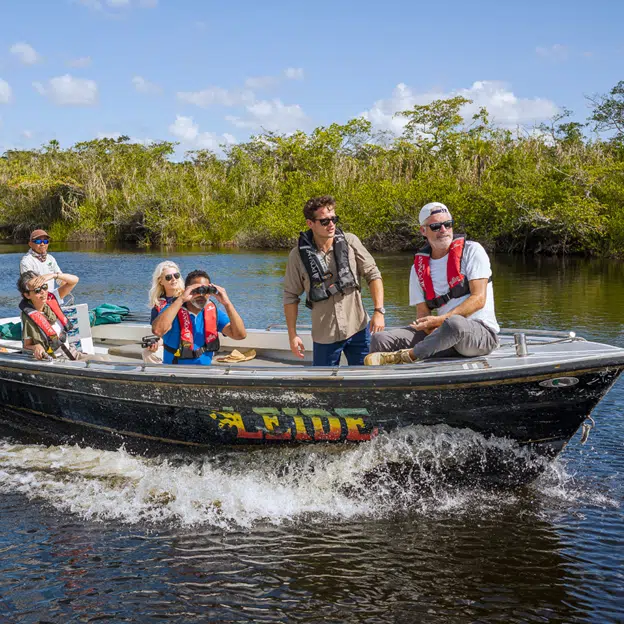
Rio Esquinas
Journey to the Rio Esquinas mangroves aboard a zodiac, where soaring trees and unique wildlife create a mesmerizing landscape. Mangrove ecosystems are crucial for biodiversity – they act as nurseries for fish, protect coastlines from erosion, and sequester vast amounts of carbon, all while hosting unique species that thrive in brackish water. Your guide will help you be on the lookout for squirrel monkeys, white ibis, toucans, and great blue herons – all of them dependent on this abundant river-to-sea environment.
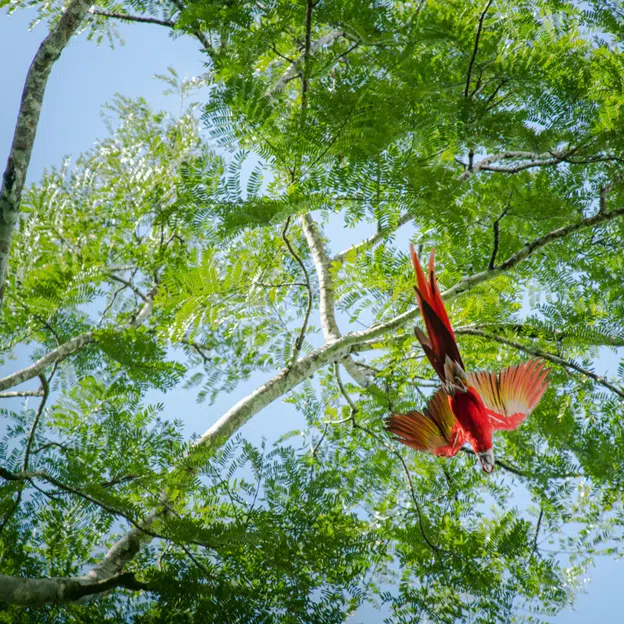
Drake Bay & Corcovado National Park
Explore the rich biodiversity of Drake Bay, whose waves kiss the famed Corcovado National Park, Costa Rica’s largest. The park’s 164 square miles are heralded as the most biologically intense place on Earth. By most counts, 3% of the planet’s biodiversity thrives here. This abundance can be explained by the park’s many vegetation zones – 13 regions of distinct plant species, each of which supports a unique ecosystem. The bay’s forests and coastline are a vital corridor for migrating species, including humpback whales and dolphins, and a key zone of tropical biodiversity, including tapirs and scarlet macaws.
Curú Wildlife Refuge
In the magnificent Curú Wildlife Refuge, tropical rainforest meets coastal estuaries. The refuge tells an internationally renowned success story – a pioneering private reserve modelled for sustainable land management and conservation that hosts a research center for scientists. It’s especially important for biodiversity because it blends forest, mangrove, and beach habitats – supporting an astonishing range of life, from recently reintroduced spider monkeys and scarlet macaws to more than 200 bird species, including colorful trogons and hummingbirds.
.
Panama: A Mosaic of Marine Riches
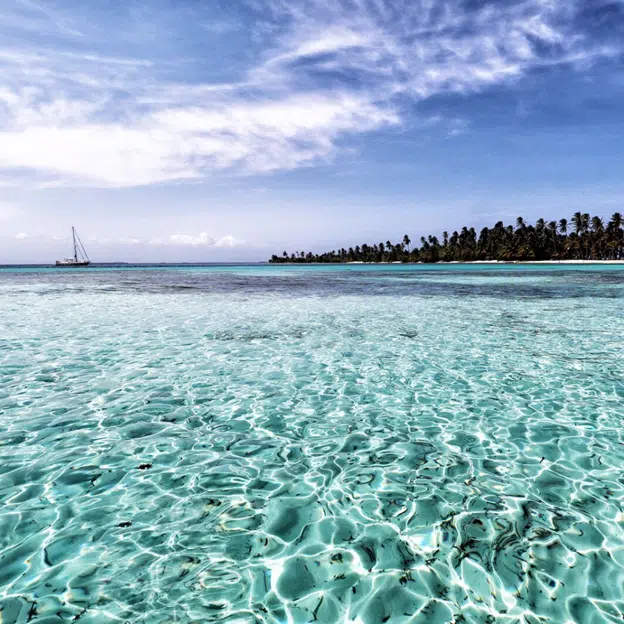
Holandeses Cayos, San Blas Islands
The San Blas archipelago – just off the northern coast of Panama – is one of the most biodiverse places in the Caribbean. Here, crystalline waters and white sands surround more than 300 islands. The San Blas Islands are crucial to biodiversity as they protect extensive coral ecosystems which serve as nurseries for tropical fish and other species. This idyllic setting invites you to swim and snorkel among vibrant reefs teeming with marine life. Then, you can meet some stewards of these remarkable islands: members of the Kuna community, one of the Americas’ most authentic, least corrupted indigenous societies.
The Panama Canal
You might be surprised to learn that the Panama Canal – whose construction destroyed a wide swath of natural habitat between the Pacific and Atlantic oceans – harbors a rich biodiversity. But the surrounding forests host Soberanía National Park, home to some 500 bird species. Learn more about it in Panama City, at the Frank Gehry-designed Biomuseo, a striking museum dedicated to Panama’s role as a natural land bridge between North and South America. The country’s geographic position has made it one of the most biologically rich countries on Earth.
For an open-air, more science-focused immersion, you can visit the Punta Culebra Nature Center, part of the Smithsonian Tropical Research Institute. This unique center plays an important role in educating visitors on marine science and conservation, the impact of changing ocean conditions on coastal biodiversity, and the intersection between human activity and fragile marine ecosystems.

Darién National Park
Venture into the remote Darién National Park, a UNESCO World Heritage Site. This sanctuary of mangroves, rocky coasts, sandy beaches, swamps, and rainforests contains one of Central America’s largest intact lowland tropical forests. These habitats host a profusion of species – jaguars, harpy eagles, and countless endemic plant species among them. And its birdlife has earned it a designation as an Important Bird Area by Birdlife International. In addition, the park has another unique distinction: It is one of the few such protected areas in the world where humans also dwell – the Emberá community. Your time here features a visit with them.
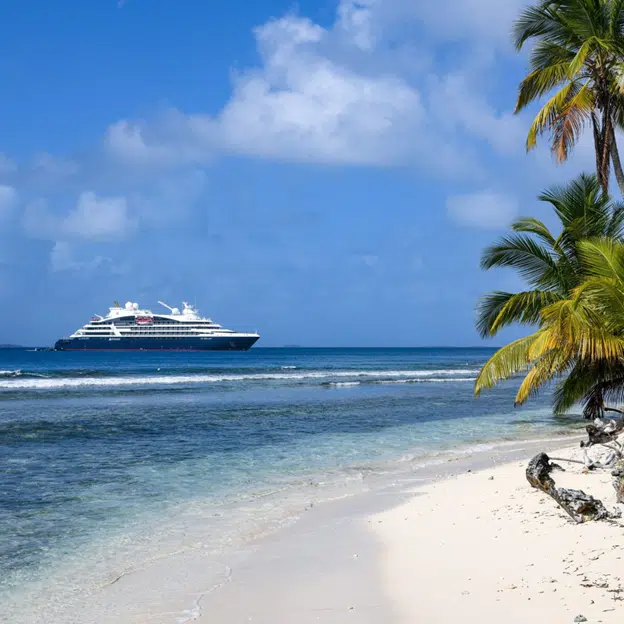
Pearl Islands
Named for the pearl oysters once harvested here, the more than 220 Pearl Islands offer spectacular snorkel and swimming opportunities from sandy white beaches. The pearls are long gone, and the archipelago’s ecological balance is fragile, but magnificent beauty remains. The diverse ecosystems here are a sanctuary for marine life, including migratory whales and nesting seabirds. And speaking of seabirds, you just might encounter the blue-footed booby on the Pearl Island of Pacheca.
Cébaco Island
Immerse yourself in the lush tropical beauty of Cébaco Island when you walk one of its several hiking trails. Walk along soft sand beaches, gain some elevation up a mountain path, or walk through the mangroves. A profusion of scarlet macaws takes wing in the canopy among rare flora and fauna only found here. If you prefer, don your snorkel gear and set out to explore the marine national park of Cobia, part of the UNESCO World Heritage Site that encompasses a vast coral reef and other surrounding islands. The marine ecosystem here boasts immense biodiversity – some 760 species of fish, 33 species of shark, and 20 species of marine mammal.
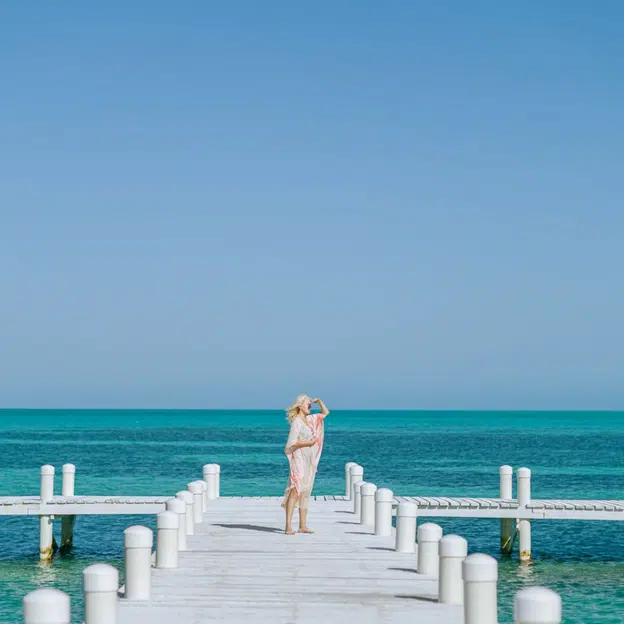
Embark on a Journey of Discovery
PONANT EXPLORATIONS’ cruises to Costa Rica and Panama transcend traditional travel. Our eco-adventures are thoughtfully designed to immerse you in the natural world, fostering a deeper appreciation for the planet’s biodiversity.

